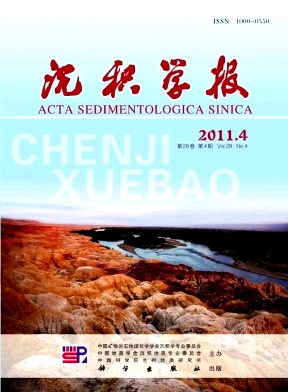Comparison and Calibration of Laser Grain Size Analysis with Pipettesieve Method: A solution for the underestimation of the clay fraction of surface sediments from the Eastern South China Sea
- Received Date: 1900-01-01
- Rev Recd Date: 1900-01-01
- Publish Date: 2011-08-10
-
Key words:
- surface sediments in South China Sea /
- pipette method /
- laser method /
- grain size analysis /
- comparison and calibration
Abstract: Classically, the grain size of sediment samples is determined by the sieve method for the coarse fractions and by the pipette method, based on the Stokes' sedimentation rates, for the fine fractions. Results from the pipette method are compared with results from laser diffraction size analysis using a set of randomly selected 106 surface sediments which are collected from the Eastern South China Sea. The aim of this research is to calibrate systematically the grain size and content of clay fraction and sediment type achieved from laser diffractometry.
〓〓The contents of sand, silt, and clay in sediments of eastern South China Sea with depth more than 2 000 m were 3.7%, 42.4% and 53.9%, respectively, obtained from standard sedimentation method, and 9.3%, 61.1%, 29.6% respectively from laser diffractometry. The deviation of contents of silt and clay fraction obtained from the two methods is about 20%. The sediment types obtained from the eastern South China Sea obtained from sedimentation method are essentially silty clay of 69.8%, and secondly is clay 19.8%. There is very small amount of other types, only 11.4%. The main sediment type based on laser diffractometry is clayey silt of 89.6%, and secondly is sandy silt of about 10.4%, there is no any other types obtained. The agreement of sediment type between the two methods is only 21.7%, which means there are significant discrepancies for the contents of clay fraction achieved from two different methods.
〓〓Therefore, it is not possible to compare the contents of different grain size and sediment type obtained from the two methods without calibration. The grain size of clay fraction from laser method was calibrated to <0.01 mm, and 0.063~0.01 mm for silt correspondingly. The contents of clay and silt fraction are 54.2% and 36.2%, respectively, after calibration, which is very close to the result of 52.1% for the clay fraction and 42.3% for the silt fraction from the sedimentation method. The agreement between sedimentation method and calibrated laser method is 91.5%. Most of clayey silt is calibrated to silty clay. The correlation coefficients are 0.3203 for the silt fraction and 0.3347 for the clay fraction after calibration. The relationship appears to be positively strong, indicating that the calibration for grain size and content of clay fraction is successful.
〓〓However, there is no distinct improvement for the content of clay and silt fraction calibrated according to regressive equation. The contents are 29.1% and 62.2%, respectively. The discrepancy between the content of clay and silt fraction from two methods is 20%, but there is lower amplitude of variation. The agreement of sediment type with regressive method is only 21.7%, which means the discrepancy arrives at 78.3%, indicating that calibration with regressive equation for content of clay and silt fraction and sediment type. The research suggested that after the grain size were calibrated to <0.01 mm for clay fraction and 0.063~0.01 mm for silt fraction, the contents of clay and silt fraction and sediment type agreed well with those from sedimentation method. There is almost no improvement using regressive calibration.
| Citation: | ZHANG Fuyuan. Comparison and Calibration of Laser Grain Size Analysis with Pipettesieve Method: A solution for the underestimation of the clay fraction of surface sediments from the Eastern South China Sea[J]. Acta Sedimentologica Sinica, 2011, 29(4): 767-775. |






 DownLoad:
DownLoad: